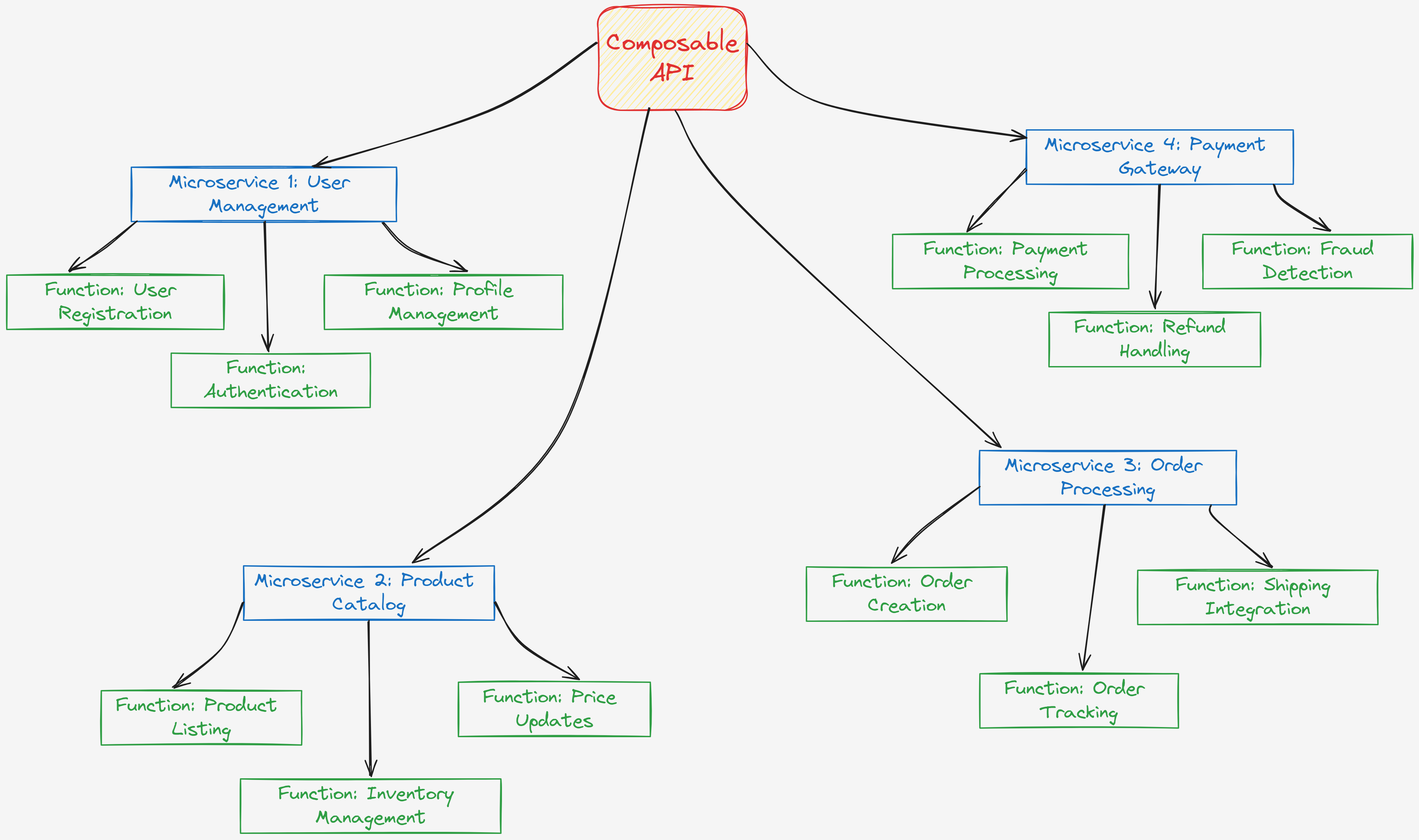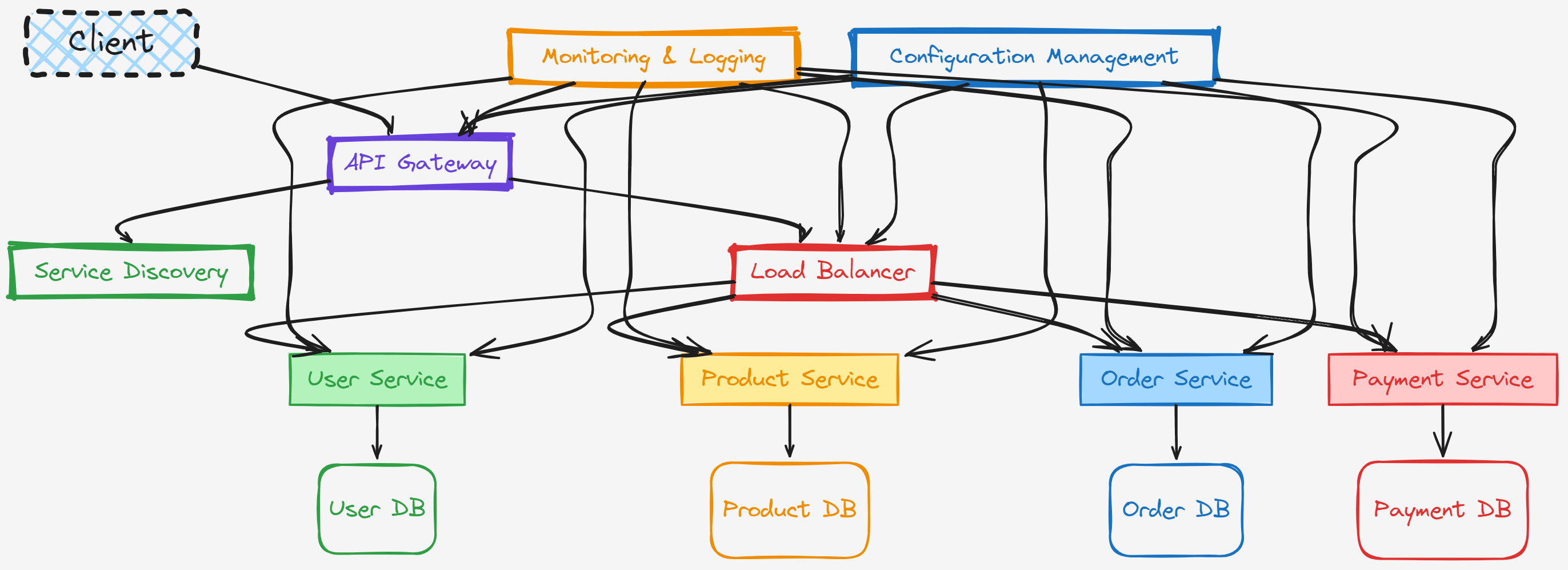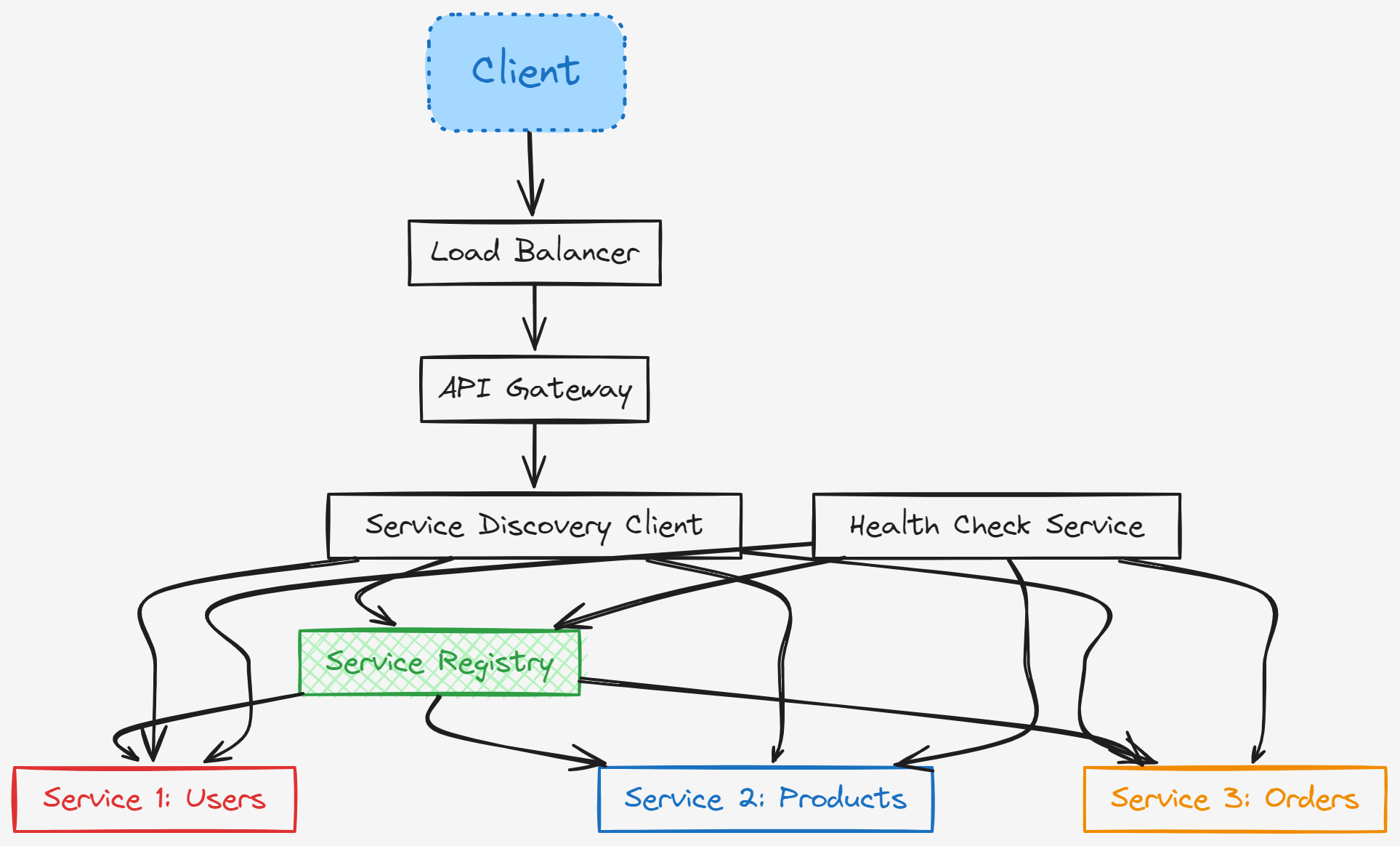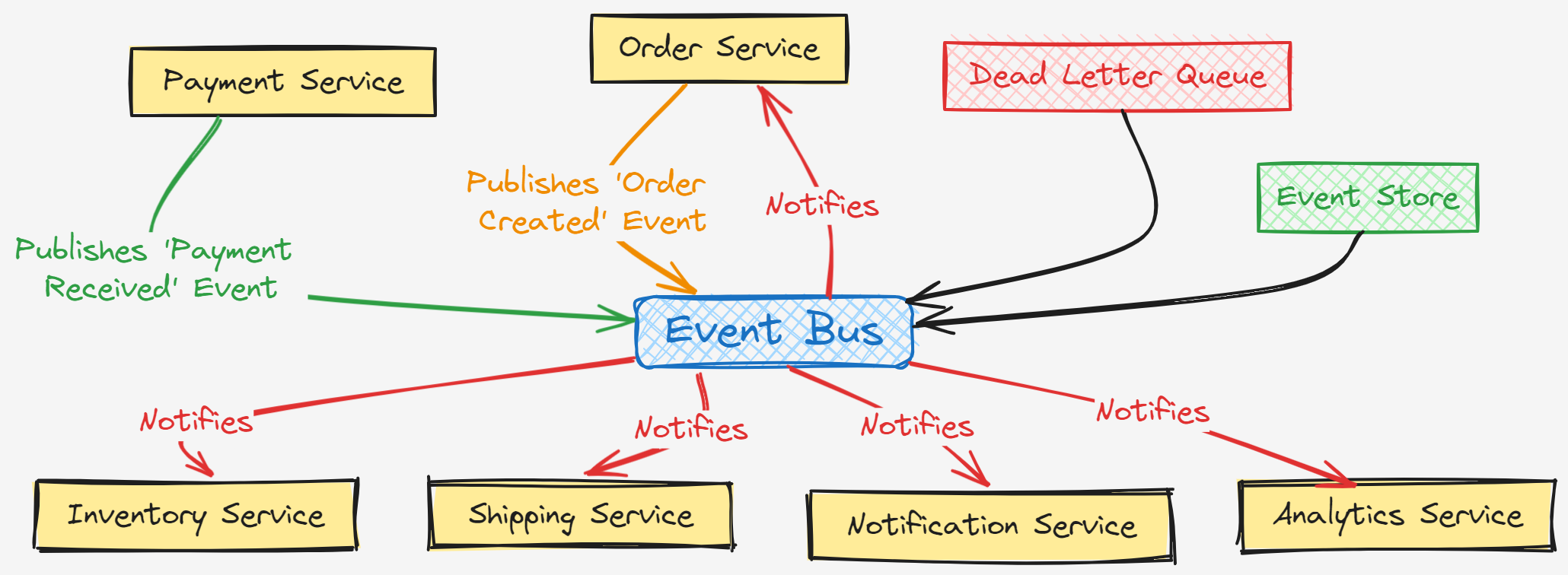Composable APIs: Building Flexible and Scalable Systems
2024-06-25
In the ever-evolving landscape of software development, the ability to create adaptable, efficient, and scalable systems is paramount. Composable APIs have emerged as a powerful paradigm to address these needs. This article delves deep into the world of Composable APIs, exploring their intricacies, benefits, and implementation strategies.
What are Composable APIs?
Composable APIs, also known as API composition or microservices composition, represent a architectural approach where complex functionalities are built by combining multiple smaller, specialized APIs. This concept goes beyond simple API integration; it’s about creating a ecosystem of modular, reusable components that can be easily assembled, disassembled, and reassembled to meet changing business requirements.

In this enhanced diagram, we see a more realistic representation of a Composable API structure. Each microservice (User Management, Product Catalog, Order Processing, and Payment Gateway) is composed of multiple specialized functions. This granular approach allows for maximum flexibility and reusability.
Benefits of Composable APIs
-
Unparalleled Flexibility: By breaking down complex systems into smaller, modular components, developers gain the ability to modify, replace, or upgrade individual parts without disrupting the entire system. This granular control allows for rapid adaptation to new business requirements or technological advancements.
-
Scalability on Demand: One of the most significant advantages of Composable APIs is the ability to scale individual components independently. This means you can allocate resources precisely where they’re needed, optimizing performance and cost-efficiency.
-
Maximized Reusability: Once created, API components become valuable assets that can be reused across multiple projects or applications. This not only saves development time but also ensures consistency across your organization’s software ecosystem.
-
Accelerated Time-to-Market: The ability to assemble pre-built, well-tested components allows for rapid prototyping and faster deployment of new features or products. This can be a game-changer in competitive markets where speed is of the essence.
-
Enhanced Maintainability: Smaller, focused components are inherently easier to understand, test, and maintain compared to monolithic systems. This leads to reduced technical debt and more efficient long-term management of your software infrastructure.
Implementing Composable APIs: A Deep Dive
1. Microservices Architecture: The Foundation
Microservices architecture forms the bedrock of Composable APIs. This approach involves decomposing a large application into smaller, independently deployable services that communicate with each other through well-defined APIs.

This enhanced diagram illustrates a more comprehensive microservices architecture. It includes essential components like Service Discovery, Load Balancing, Monitoring & Logging, and Configuration Management, which are crucial for building robust and scalable Composable APIs.
2. API Gateway: The Orchestrator
An API Gateway acts as a single entry point for all client requests, intelligently routing them to the appropriate microservices. It’s not just a simple proxy; a well-designed API Gateway can handle critical cross-cutting concerns such as:
- Authentication and Authorization
- Rate Limiting and Throttling
- Request/Response Transformation
- Caching
- Analytics and Monitoring

This detailed API Gateway diagram showcases the various responsibilities and components of a robust gateway, including SSL termination and load balancing.
3. Service Discovery: The Navigator
In a dynamic environment where services can be added, removed, or scaled on-demand, service discovery becomes crucial. It allows services to locate and communicate with each other without relying on hardcoded endpoints.

This enhanced service discovery diagram includes a health check service, which is crucial for maintaining an up-to-date service registry and ensuring system reliability.
4. Event-Driven Architecture: The Communicator
Implementing an event-driven architecture can significantly enhance the composability of your APIs. In this model, services publish events when their state changes, and other services can subscribe to these events and react accordingly.

This comprehensive event-driven architecture diagram shows how different services can interact through events, including the crucial components of a Dead Letter Queue for handling failed events and an Event Store for event sourcing and auditing.
Best Practices and Personal Recommendations
-
Design for Reusability and Composability:
- Create small, focused APIs that adhere to the Single Responsibility Principle.
- Use consistent data models and naming conventions across your APIs.
- Implement hypermedia controls (HATEOAS) to make your APIs self-descriptive and discoverable.
-
Standardize Your Approach:
- Stick to widely-adopted protocols like REST or GraphQL for easier integration and interoperability.
- Consider using OpenAPI (formerly Swagger) for API documentation and contract-first design.
- Implement a consistent error handling strategy across all your APIs.
-
Implement Comprehensive Documentation:
- Provide clear, detailed documentation for each API, including examples and use cases.
- Use tools like Swagger UI or ReDoc to create interactive API documentation.
- Include information about rate limits, authentication methods, and expected response formats.
-
Version Your APIs Thoughtfully:
- Use semantic versioning to manage changes and updates without breaking existing integrations.
- Consider using URI versioning (e.g., /v1/users) for simplicity, or header-based versioning for more flexibility.
- Maintain backwards compatibility whenever possible, and communicate breaking changes well in advance.
-
Implement Robust Error Handling and Logging:
- Ensure each API component handles errors gracefully and provides meaningful error messages.
- Implement structured logging with correlation IDs to trace requests across multiple services.
- Use tools like ELK stack (Elasticsearch, Logstash, Kibana) or Splunk for centralized log management and analysis.
-
Monitor and Optimize Performance:
- Implement comprehensive monitoring using tools like Prometheus and Grafana.
- Set up alerting for key metrics like response time, error rates, and resource utilization.
- Regularly perform load testing to identify and address performance bottlenecks.
-
Secure Your APIs:
- Implement OAuth 2.0 or OpenID Connect for robust authentication and authorization.
- Use API keys for rate limiting and analytics, but not as a primary means of authentication.
- Implement HTTPS everywhere, including for internal service-to-service communication.
-
Consider Implementing Circuit Breakers:
- Use libraries like Hystrix, Resilience4j or Polly (for .NET) to implement circuit breakers.
- This prevents cascading failures in your microservices architecture by failing fast when a service is unavailable.
-
Embrace Asynchronous Communication:
- Use message queues (like RabbitMQ or Apache Kafka) for asynchronous communication between services.
- This can help improve performance and resilience in your system.
-
Implement Proper Testing Strategies:
- Develop comprehensive unit tests for each service.
- Implement integration tests to ensure proper interaction between services.
- Use contract testing (e.g., with tools like Pact) to verify that services meet their contractual obligations.
Conclusion
Composable APIs represent a paradigm shift in how we approach software architecture. By embracing modularity, reusability, and flexibility, organizations can create adaptable systems that can quickly respond to changing business needs. While implementing Composable APIs requires careful planning and design, the benefits in terms of scalability, maintainability, and time-to-market make it an invaluable strategy for modern software development.
As we move towards an increasingly interconnected and rapidly evolving technological landscape, the ability to compose and recompose functionality quickly will become not just an advantage, but a necessity. By adopting Composable APIs, developers and organizations can position themselves at the forefront of this trend, ready to tackle the challenges and seize the opportunities of tomorrow’s digital ecosystem.
Remember, the journey to fully embracing Composable APIs is iterative. Start small, perhaps by decomposing a monolithic application into a few key services. Learn from this experience, and gradually expand your approach. With patience, persistence, and a commitment to continuous improvement, you can transform your organization’s software architecture to be more flexible, scalable, and future-proof than ever before.
